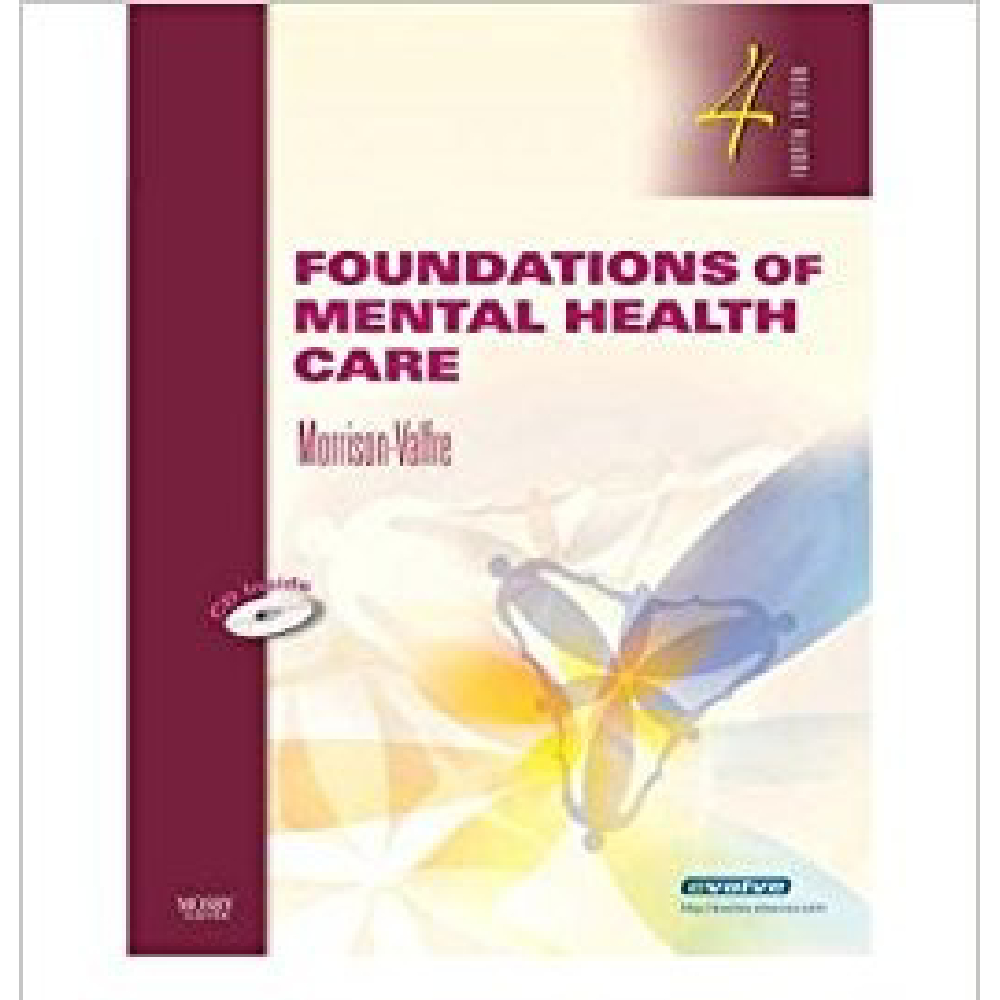Test Bank
Chapter 11: The Therapeutic Relationship
MULTIPLE CHOICE
1. A therapeutic relationship differs from other relationships in that the focus of a therapeutic relationship is on:
a. The client
b. Establishing a friendship
c. The nurse
d. The plan of care
ANS: A
Therapeutic relationships are consciously directed and focus on the client, whereas a social relationship focuses on establishing a friendship. The nurse is never the focus of client care, and the plan of care is developed after the relationship has been established.
DIF: Cognitive Level: Comprehension REF: Page 109 OBJ: 1
TOP: Dynamics of the Therapeutic Relationship
KEY: Nursing Process Step: Assessment MSC: Client Needs: Psychosocial Integrity
2. The nurse is attempting to develop trust with a newly admitted female client for the purpose of establishing a therapeutic relationship. The nurse is in the middle of administering medications to all clients on the unit upon the client’s arrival to the unit. The client asks the nurse to sit and talk with her for awhile. What is the nurse’s best response?
a. “I am busy right now, but I will come back later.”
b. “Give me just a few more minutes to finish passing medication to the other clients.”
c. “I will return in 20 minutes so we can talk.”
d. “I have to finish giving all the clients their medications, but I will then come back so we can talk.”
ANS: D
This is an honest statement that lets the client know exactly what the nurse is doing and helps to build trust in that the nurse is not making up excuses or making false promises. The nurse’s statement that she is busy right now would make the client feel unimportant. The nurse would be making false promises if she were to say that she will be back in only a few minutes or even in 20 minutes because most likely, it will take more than this amount of time to finish giving out medications.
DIF: Cognitive Level: Application REF: Page 110 OBJ: 2
TOP: Trust KEY: Nursing Process Step: Intervention
MSC: Client Needs: Psychosocial Integrity
3. A nurse is working with a male client in a mental health outpatient clinic. The client voices a desire to become more autonomous. Which goal will assist the client in becoming more autonomous?
a. The client will check his calendar each night to plan for commitments scheduled on the following day.
b. The nurse will remind the client weekly of his appointment at the clinic for the following week.
c. The client will ask the nurse to call him to remind him of his appointment.
d. The nurse will complete the client’s calendar of daily commitments scheduled for the week.
ANS: A
Autonomy refers to the ability to direct and control one’s activities and destiny. Working toward this goal is a simple way to begin to develop control over one’s life. Reminding the client and completing the client’s calendar are nursing goals rather than client goals. If the client asks the nurse to call him to remind him, no responsibility is placed on the client.
DIF: Cognitive Level: Application REF: Page 110 OBJ: 2
TOP: Autonomy KEY: Nursing Process Step: Planning
MSC: Client Needs: Psychosocial Integrity
4. An important aspect of developing a therapeutic relationship with a mental health client is for the nurse to show that she cares about the client. The nurse who is working on an inpatient unit can show signs of caring by:
a. Telling a client several times a day that he or she cares about him or her
b. Asking a client what his or her favorite movie is, then showing that movie during a movie night on the unit
c. Giving a client a card that has a sentiment that says the nurse cares about him or her
d. Telling a client that he or she is the favorite client
ANS: B
Showing a favorite movie is a safe way of showing the client that you are aware of him or her as an individual, rather than as just another client. If the nurse only tells the client that she cares about him or her, it does not prove to the client that the nurse cares. Giving a client a card or telling the client that he or she is a favorite is too personal and may mislead the client regarding the development of a social relationship.
DIF: Cognitive Level: Application REF: Page 111 OBJ: 2
TOP: Caring KEY: Nursing Process Step: Intervention
MSC: Client Needs: Psychosocial Integrity
5. The nurse is caring for a female client with a diagnosis of severe bipolar disorder. Out of many treatment methods, the one treatment that the client and the team have found to be most effective is the medication lithium. The client voices concern about her future with this diagnosis. Which nurse response best represents the concept of hope?
a. “You need to take your lithium unless you want to relapse.”
b. “You are doing so well that there is nothing you can’t do if you put your mind to it.”
c. “You are doing very well since we found that lithium helps. You should do well as long as you continue your therapy and medication.”
d. “A lot of people are much worse off than you are, so you should be thankful that you are doing as well as you are.”
ANS: C
This option is realistic and provides hope without providing false hope. Stating that the client will relapse if she discontinues medication suggests that the nurse is threatening the client, which provides no hope. Telling the client that “there is nothing that you can’t do” may be providing false hope. Reminding the client that others are worse off is disregarding the client’s feelings.
DIF: Cognitive Level: Application REF: Page 112 OBJ: 2
TOP: Hope KEY: Nursing Process Step: Intervention
MSC: Client Needs: Psychosocial Integrity
6. A male client with schizophrenia has lost his job and home and has been living in a homeless shelter. He voluntarily admits himself into a mental health treatment facility. The client’s current living situation and lack of a job at this time likely will contribute to his having difficulty with which dimension of hope?
a. Affective
b. Contextual
c. Temporal
d. Affiliative
ANS: B
Although all the dimensions of hope listed in these options may be difficult for this client, the dimension that is representative of the living and job situation for this client is contextual, because this refers to inadequate physical, financial, and emotional resources.
DIF: Cognitive Level: Comprehension REF: Page 111 OBJ: 2
TOP: Hope KEY: Nursing Process Step: Evaluation
MSC: Client Needs: Psychosocial Integrity
7. A female client with obsessive-compulsive disorder is undergoing treatment in an outpatient setting and is attending group therapy sessions. She is working on controlling the compulsion of touching her head three times every time she talks. To maintain the therapeutic relationship established with the client, by which action can the nurse show acceptance?
a. Ignoring the compulsion during the group therapy session and talking with the client privately about the behavior
b. Asking the group to remind the client every time she touches her head to help her consciously stop the compulsion
c. Pointing out the compulsion to the group each time the client exhibits the behavior
d. Asking the client to stop talking during the group session until she has learned to control her compulsion
ANS: A
Ignoring the behavior in group therapy shows acceptance of the behavior because the nurse does not embarrass the client in front of the group. Talking with her privately shows compassion for the client. Asking the group to remind the client of the compulsion and pointing out the compulsion to the group would belittle the client. Asking the client to stop talking would defeat the purpose of the support of belonging to a therapeutic group.
DIF: Cognitive Level: Application REF: Page 112 OBJ: 4
TOP: Acceptance KEY: Nursing Process Step: Intervention
MSC: Client Needs: Psychosocial Integrity
8. Showing empathy toward a client is an effective tool in establishing rapport. Which nurse statement is the best example of an empathetic response?
a. “I am so sorry for your loss.”
b. “It must be difficult for you going through this loss.”
c. “I am sure you will feel better soon.”
d. “Try to look on the bright side.”
ANS: B
Empathy involves trying to understand the emotions another person is experiencing, which is what this statement demonstrates. The nurse’s expression of sorrow for the client’s loss is an example of a sympathetic response, and the nurse’s statement to the client that he or she will feel better soon or to “look on the bright side” disregards the client’s feelings.
DIF: Cognitive Level: Application REF: Page 112 OBJ: 3
TOP: Rapport KEY: Nursing Process Step: Intervention
MSC: Client Needs: Psychosocial Integrity
9. The characteristic of genuineness helps in establishing a therapeutic relationship with a client. Which nurse response is the best example of a display of genuineness to a client who is going through a difficult divorce?
a. “I know exactly how you feel. My husband and I divorced 2 years ago because of his infidelity.”
b. “Divorcing my husband was the best thing I ever did.”
c. “I have friends who have gone through a divorce. It must be difficult for you.”
d. “I am sorry that you have to go through this difficult time.”
ANS: C
This response shows the client sincerity and honesty, which are components of being genuine. The nurse should not offer too much personal information, such as providing information about her own divorce. When the nurse says that she is sorry that the client is experiencing the difficult time, it is an example of a sympathetic response.
DIF: Cognitive Level: Application REF: Page 112 | Page 113
OBJ: 4 TOP: Genuineness KEY: Nursing Process Step: Intervention
MSC: Client Needs: Psychosocial Integrity
10. During the preparation phase of a therapeutic relationship with a client, what is the main task to be completed by the nurse?
a. To establish with the client the purpose of the relationship
b. To gather and review all possible information regarding the client
c. To build trust with the client
d. To obtain agreement from the client to work in conjunction with the nurse
ANS: B
The main task during the preparation phase is to gather and review all possible information regarding the client; this can be accomplished by obtaining data from past and current medical records and from the client’s significant others. The other options are tasks that occur during the orientation phase.
DIF: Cognitive Level: Comprehension REF: Page 113 OBJ: 6
TOP: Phases of the Therapeutic Relationship
KEY: Nursing Process Step: Planning MSC: Client Needs: Psychosocial Integrity













Reviews
There are no reviews yet.